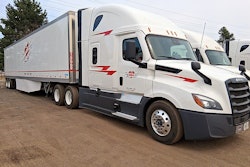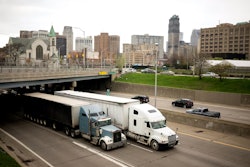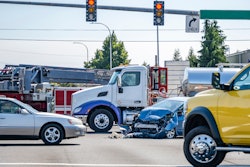Federal Motor Carrier Safety Administration is working with the American Transportation Research Institute, contractor SAIC and the Commercial Vehicle Safety Alliance to gather information from carriers regarding perceptions of crash risks, in-vehicle safety systems and technology investment considerations. For more information and to obtain a questionnaire, visit the American Trucking Associations website at www.truckline.com.
FMCSA withdrew a proposal to require all commercial vehicles to bear a manufacturer’s label certifying compliance with Federal Motor Vehicle Safety Standards. Several groups, including the American Trucking Associations and Commercial Vehicle Safety Alliance, argued that requirement would have accomplished nothing because such a label would provide no guarantee that the vehicle was still in a safe operating condition.
U.S. Department of Transportation completed 39 percent more rules in 2004 than it did in 1999, but the average time to complete action increased from 3.9 years to 5.4 years, the department’s Office of Inspector General reported. The OIG said the average completion time increased primarily because the department in 2004 withdrew a number of rules that had been pending for years. One of those rulemakings, a biometric identifier for commercial driver’s licenses, had been open for more than 15 years.
Kentucky Trucking Association will hold a Highway Watch driver training program at the Mid-America Trucking Show in Louisville on Friday, April 1.
February in North Dakota – does it get any better? That’s what John Doe was thinking to himself sarcastically as he piloted his tractor-trailer down a two-lane highway east of Pierre. And the unexpected blizzard Doe had encountered certainly wasn’t his idea of paradise. He wished he had remembered to go online to check the forecast during his breakfast stop, but it was too late now.
But while Doe’s dispatcher understood the driver’s situation, he also reminded Doe that his load of groceries was time-sensitive and that he needed to attempt to complete his trip. The dispatcher said he would notify the customer that the delivery could be a couple of hours late, and he also reassured Doe to take any precautions necessary for his own safety – and that of other drivers.
Doe hung up his cellphone in frustration and cautiously made his way through the snowfall. He soon found himself creeping along behind four slow-moving four-wheelers following the faint path left earlier by a plow. Suddenly, all cars halted because the lead vehicle had run out of road clearance and now was perched on a pile of compressed snow, spinning its wheels.
Undaunted, Doe slowly and carefully attempted to pass all four cars by pulling into the left lane and … smoosch! What happened? Apparently, the plow had partially “re-routed” the road: Part of the “left lane” was, in reality, the edge of a ditch, into which the left wheels of Doe’s tractor had slowly sunk.
So John – who was beyond frustrated at this point – locked his cab and hoofed it back to a gas station he’d just passed, where he calmed down with a much-needed cup of coffee and a muffin before calling a tow truck. Ultimately, it took two wreckers to extricate John’s rig, but he still delivered his load of perishables with time to spare.
While there wasn’t a scratch on his power unit or trailer – or any of the other four vehicles at the scene – Doe received a warning letter for a preventable accident, which he contested. Asked to resolve the dispute, the National Safety Council’s Accident Review Committee ruled that Doe had not been involved in an “accident” because his vehicle was OK, no property had been damaged and nobody had been injured.
FMCSA clarifies penalty policy
The Federal Motor Carrier Safety Administration has issued guidance clarifying a Sept. 8, 2000, policy statement on what constitutes a pattern of critical or acute violations, which under Section 222 of the Motor Carrier Safety Improvement Act of 1999 must be assessed the maximum penalty. The 2000 policy memorandum stated that FMCSA would consider a pattern to be three compliance reviews within six years in which violations of the same part of the Code of Federal Regulations were found.
Since issuance of that policy, the agency has received numerous questions, which it answered in a Dec. 28, 2004, notice of clarification. The notice:
· Establishes that only enforcement cases closed after Sept. 8, 2000, will be included in the six-year calculation;
· Specifies the precise types of actions that constitute a closed enforcement case;
· Elaborates on the method for calculating the six-year period to be used when assessing maximum penalties;
· Declines to define all the “extraordinary circumstances” that might lead to a reduction in the maximum penalty and instead places the burden on the carrier to demonstrate those circumstances;
· Declared that no additional notice other than the policy statement is needed to inform carriers that they might be subject to maximum penalties based on a pattern of violations;
· Declined to permit FMCSA Services Centers “at this time” to settle Sec. 222 cases for less than the maximum penalty assessed. Settlement agreements establishing terms of payment will be allowed, however. FMCSA said it will evaluate the settlement limitation as it gains more experience.
For a copy of the notice of clarification, visit this site and search Docket No. 19882.









